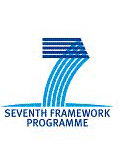Doppler Frequency Sidelobes Level Control for WiFi-Based Passive Bistatic Radar
| Author(s) | Falcone Paolo, Colone Fabiola, Lombardo Pierfrancesco |
| Organization(s) | University of Rome "La Sapienza" - DIET Dept. (Italy) |
| Conference | IEEE RadarCon 2011 |
| Conference Date | 23 - 27 May 2011 |
| Conference Location | Kansas City, Missouri (USA) |
| On page(s) | 435 - 440 |
|
Abstract In this paper the problem of Doppler frequency sidelobes control is addressed with reference to a WiFi-based Passive Bistatic Radar (PBR). In particular we show that the Ambiguity Function of typical WiFi transmissions usually yield a high sidelobes level which might strongly limit the detection capability of the PBR Conventional weighting networks are shown to be ineffective against such Doppler sidelobes structures. Thus an innovative method is introduced to design effective weighting networks based on the solution of a constrained optimization problem. The performed analysis against both simulated and real data demonstrates that the proposed technique allows a significant improvement in terms of Peak to Sidelobes Ratio thus making the considered waveform more attractive for passive local area surveillance. |
|
| Digital Object Identifier | 10.1109/RADAR.2011.5960576 |
Document Actions


